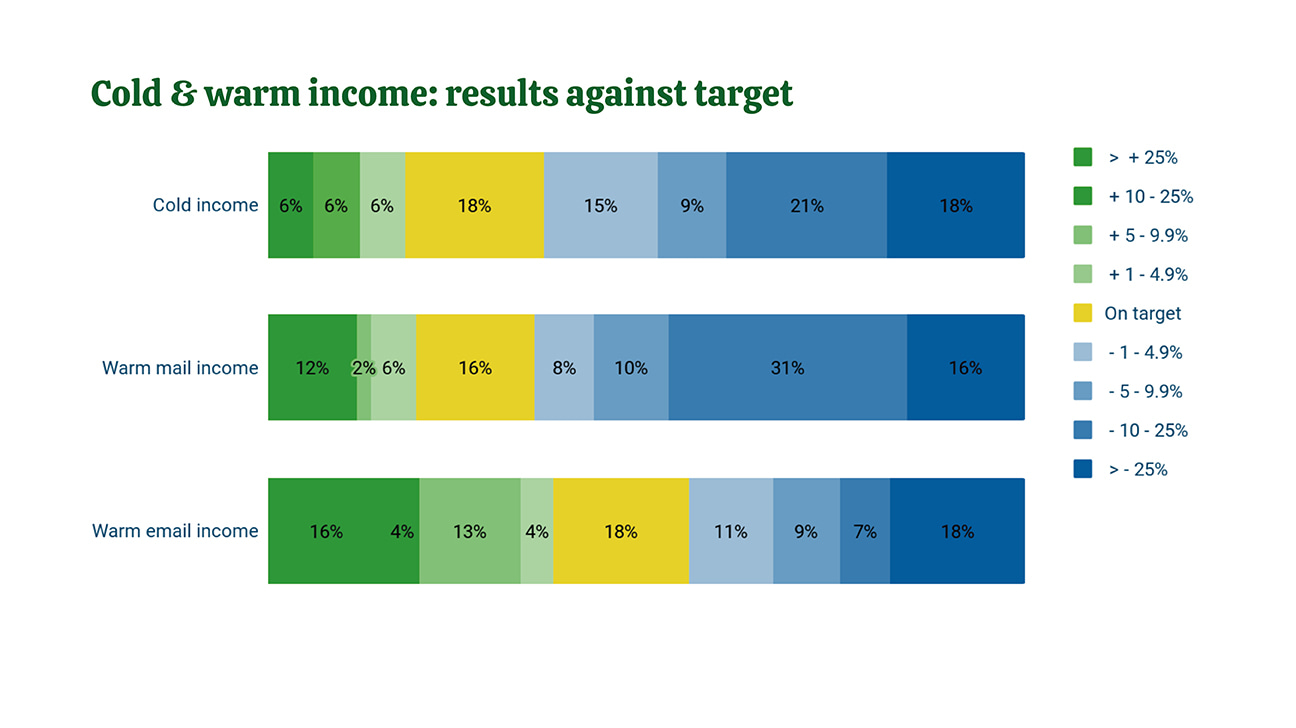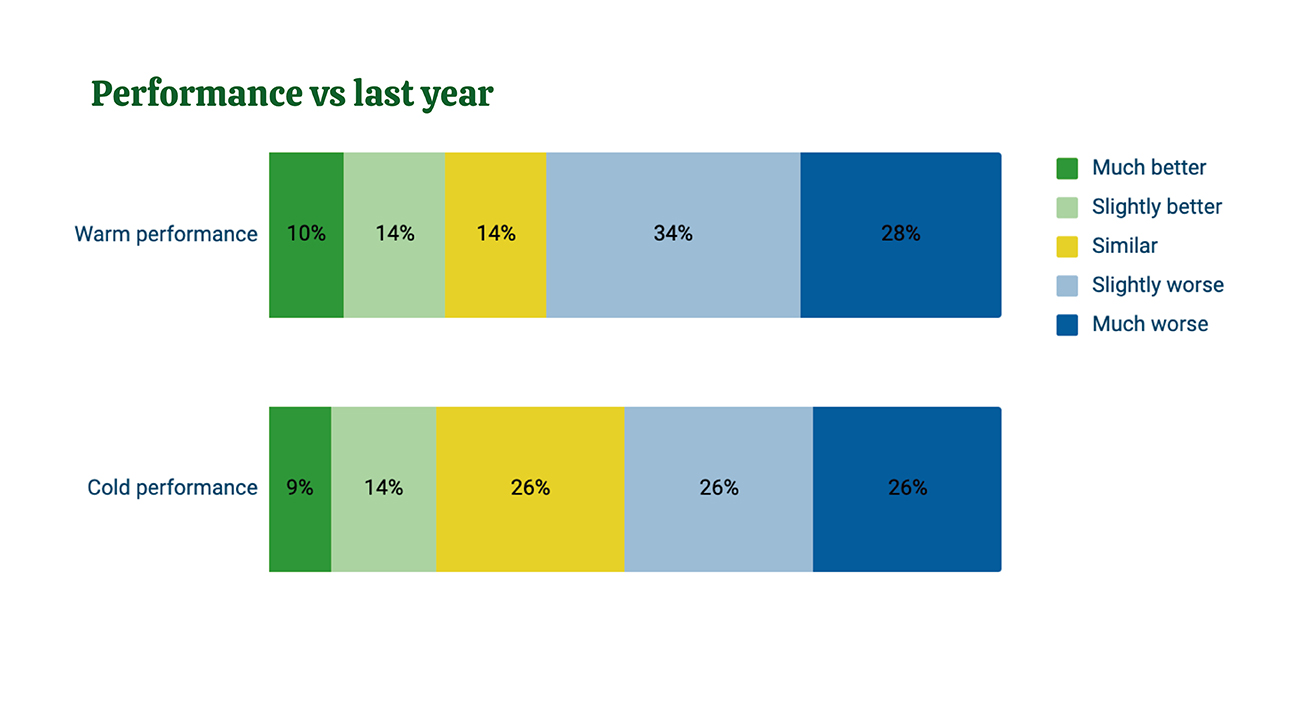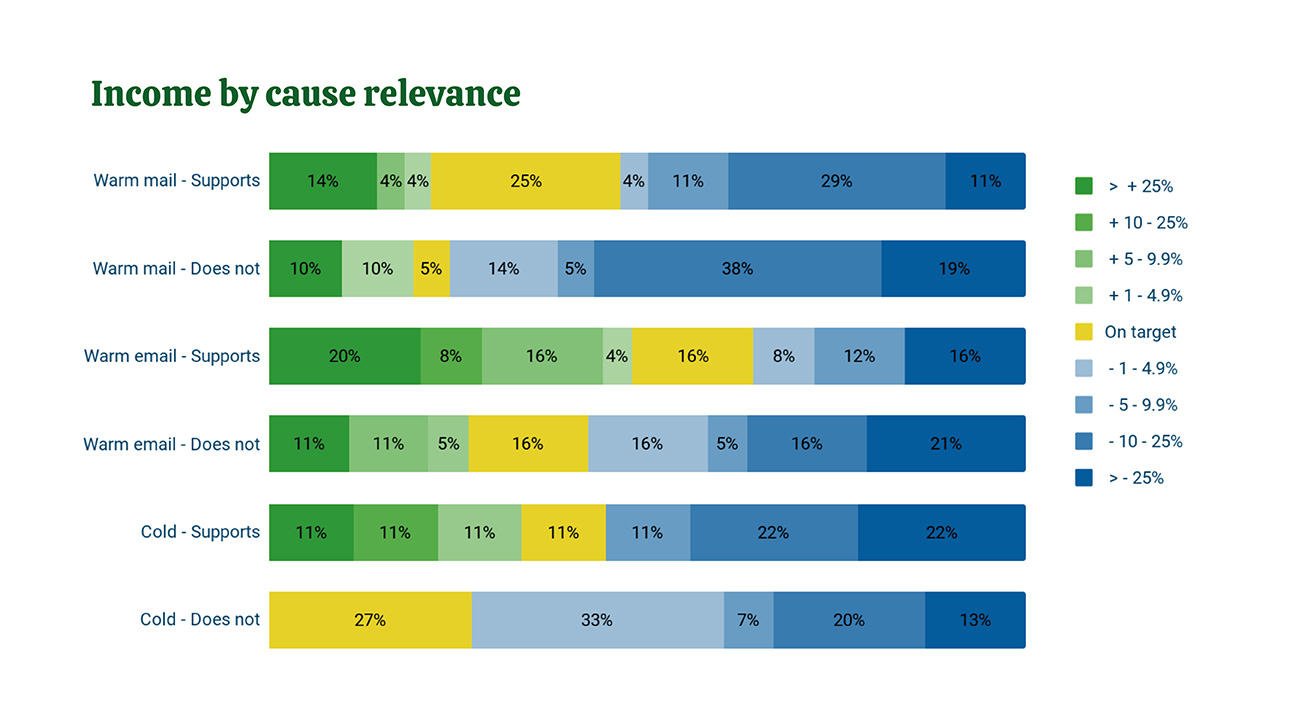Christmas in a crisis: winter appeal results

In autumn 2022 we surveyed 1,000 charity donors about their winter giving plans and the outlook was bleak. In January 2023, we followed up with charities to discover if the picture painted was the reality they experienced. Here’s what we found.
Back in September, we used YouGov Direct to ask supporters about their giving intentions over the festive period. 30% planned to give less – and just 5% planned to give more. Tough news for charities relying on Christmas giving to fill fundraising gaps.
So what really happened?
As teams returned to work in January 2023, there was a lot of hearsay across the sector about winter campaigns under performing, but the question you wanted answers to was, ‘was this winter bad for everyone – and what really affected our Christmas campaigns?’
At Open, we try to share as much insight as we can to help you make the right fundraising decisions. So we made it our mission to find out. We surveyed 58 charities in the Winter Appeal Benchmarking Report to find out how their cold and warm appeals performed against target and what proactive steps they had taken to mitigate the year’s risks.
What did we find?
In short, it was a tough winter.
Our sector was impacted by two main challenges, the cost of living crisis and Royal Mail strikes. With fewer donors planning to give and news of Royal Mail strike delays affecting delivery and responses, charities faced uncertainty at a time normally associated with higher income.
What did charities do to prepare for a tough winter?
It’s unsurprising that targets were reviewed ahead of Christmas and of the charities surveyed, many chose to reduce targets in anticipation of lower income. For warm campaigns, 39% reduced their income target. For cold campaigns, 39% of participants dropped their income target and a further 6% opted to switch from a regular giving ask to a cash or two-step ask.
Interestingly, 10% said they contacted fewer donors and 25% reduced the warm ask amount which may have played a part in the data we’re about to share. 65% referenced the cost of living crisis in their warm appeals compared to 45% to cold supporters – we’ll go into that in more detail later.

The results: warm mail
For warm mail, average gifts were healthy but more than 50% of charities reported missed income targets, potentially because of significantly lower response rates.
The results show what you might expect in a cost of living crisis. It seems those who can afford to give more did so, and lower value donors did not. Of those surveyed, charities said their mailing was on time or just one week late – signalling that the cost of living crisis was the biggest influence in missed mail campaign targets.
The results: warm email
Trends with warm email are similar to warm mail with average gifts up and response rates down, but impact was less severe and income was healthier in this channel compared to mail.
We haven’t looked into the cause of this just yet, but reasons could be people donating online because they’re aware of mail strikes or due to our sector’s demographic trends around response channel; traditionally our mail responders are older and retired. These people are more likely to be on a fixed income and perhaps more adversely impacted by the cost of living crisis.
The results: cold
63% of participants did not meet their cold campaign income targets, 18% did and 18% exceeded them. In comparison to other campaign channels we looked into, giving activity remains similar across them all – indicating a cost of living crisis impact on charity campaigns across our sector.
How does it compare to 2022?
More than 60% of our charity respondents found warm results to be worse this year than last year, giving us another insight into how tough a year it has been.
 How relevant is relevance?
How relevant is relevance?
As part of the survey, we asked charities if they support people affected by the cost of living crisis in the UK.
Of the charities that did not have a direct link to cost of living crisis support, 76% did not reach warm mail fundraising targets and 58% missed warm email income. Interestingly charities that referenced the crisis, but don’t actually help people affected, fared better.
This data confirms that relevance is critical, the cost of living crisis is on the minds of our supporters and tapping into their way of thinking can influence giving behaviour. When a cause feels close to home, be that thematically or geographically, people are more likely to give.

What should we do about it?
We’re not out of the woods yet and uncertainty remains for the political and economic situation in the UK as we plan for 2023’s appeals. In addition to keeping an eye on strike dates and planning appeals to go out earlier if they’ll be affected, there are many things you can do.
For charities planning appeals, remember that asking for less money will result in less money. Instead, give donors choice and control over how much, how, where and when they give. Allow them to pause, change, or skip donations to make sure their support stays with you.
For mid-value donors, review your activity and make sure you are meeting their needs. Don’t make offline channels their only giving option and work on email consent throughout the year. Stewardship remains a key tool for fundraisers looking to raise money in 2023 and it’s important that you don’t let relationships go cold.
Finally, remember that relevance and urgency matters. The cost of living crisis isn’t the only thing happening in people’s lives – look for the place where your work comes alive for supporters and consider what else is happening in their lives that is relevant.
How to avoid future challenges
It’s clear that charities with all of their eggs in a warm mail basket have had a very difficult winter. There are two key things we can do to mitigate this and most other potential future risks. Gather insight, and innovate.
Benchmarked insight helps us better understand the changing donor landscape and can help you make the right decisions. We are welcoming charities to our Charity Benchmarks project until the end of February. This is the sector’s largest benchmarking study looking at over £1 billion of income. If you’d like a personalised report to measure where you are against the performance of the sector, register your interest.
Innovation helps us keep up with the changes in audiences and behaviours. We have worked with some of the UK’s most-loved charities to help them find new audiences and to develop new ways for them to give. To chat with one of the team about future-proofed campaigns that keep people giving, get in touch today.
Important notes about the research:
- 58 charities participated in the study
- Not all charities answered every question in the survey (either didn’t do the activity or didn’t have the data)
- Exact figures weren’t required
- 53% were cost of living relevant causes (people who answered ‘Yes, we support people that help people through the cost of living crisis'.